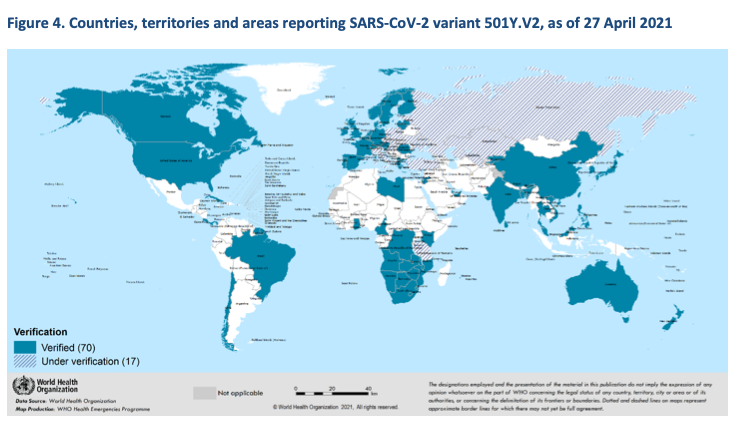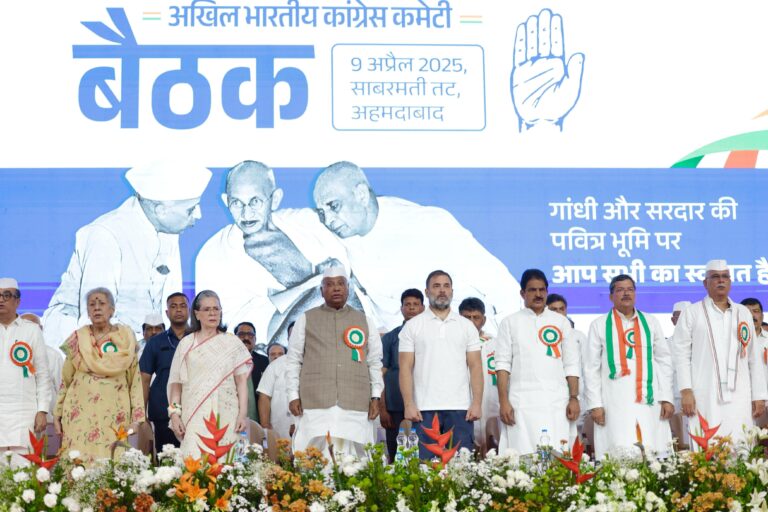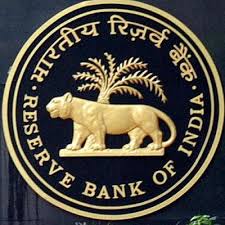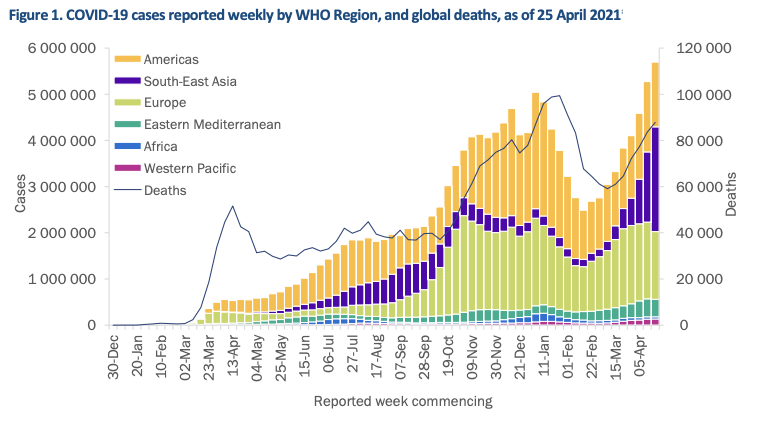
B.1.617 has a higher growth rate than other circulating COVID-19 variants in India, suggesting potential increased transmissibility
Geneva: Globally, new COVID-19 cases increased for the ninth consecutive week (week ending April 25, 2021), with nearly 5.7 million new cases reported in the last week – surpassing previous peaks, the latest COVID-19 Weekly Epidemiological Update, released by the World Health Organisation today, showed.
The highest numbers of new cases during the week were reported from India (21, 72, 063 new cases; 52% increase), the United States of America (406 001 new cases; 15% decrease), Brazil (404 623 new cases; 12% decrease), Turkey (378 771 new cases; 9% decrease), and France (211 674 new cases; 9% decrease).
The highest numbers of new deaths were reported from India (15 161 new deaths; 1.1 new deaths per 100 000; a 93% increase), Indonesia (1172 new deaths; 0.4 new deaths per 100 000; a 32% increase), and Bangladesh (669 new deaths; 0.4 new deaths per 100 000; an 8% increase).
Emerging SARS-CoV-2 variants within Pango lineage B.1.617 were recently reported as a Variants Of Interest (VOI) from India and has recently been designated as VOIs by WHO. As of 27 April, over 1200 sequences have been uploaded to GISAID and assigned to lineage B.1.617 (collectively) from at least 17 countries; most sequences were uploaded from India, the United Kingdom, USA and Singapore.
However this lineage comprises several sub-lineages, including B.1.617.1, B.1.617.2 and B.1.617.3, which slightly differ by their characteristic mutations. Both B.1.617.1 and B.1.617.2 were first identified in India in December 2020, and have been detected at increasing prevalence concurrent to the major upsurge observed in the country. B.1.617.3 was first detected in India in October 2020, but relatively fewer viruses matching this sub-lineage have been reported to date, the WHO said.
In India, heterogeneity in B.1.617 geographic distribution is observed across regions, with co-circulation of other VOCs (including Variants Of Concern (VOC) 202012/01 and 501Y.V2) and other variants (e.g., B.1.618), which collectively may be playing a role in the current resurgence in this country. Indeed, studies have highlighted that the spread of the second wave has been much faster than the first.
B.1.617 includes several mutations present in other VOIs / VOCs that have been associated with phenotypic impacts.
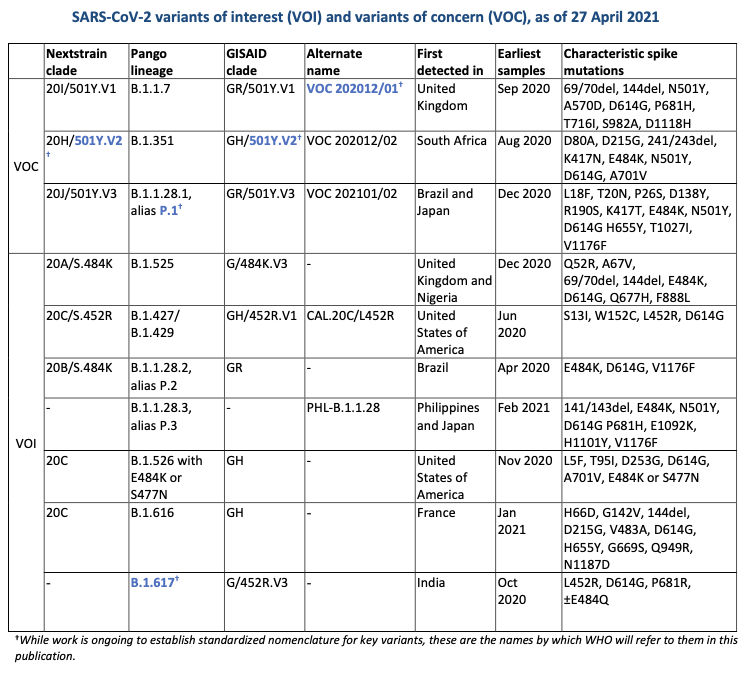
Preliminary modelling by WHO based on sequences submitted to GISAID suggest that B.1.617 has a higher growth rate than other circulating variants in India, suggesting potential increased transmissibility, with other co-circulating variants also demonstrating increased transmissibility. Other drivers may include challenges around the implementation and adherence to public health and social measures (PHSM), and social gatherings (including mass gatherings during cultural and religious celebrations, and elections). Further investigation is needed to understand the relative contribution of these factors.
As surveillance activities to detect SARS-CoV-2 variants are strengthened at local and national levels, including by strategic genomic sequencing and sharing full genome sequences with publicly available platforms such as GISAID, the number of countries/areas/territories (hereafter countries) reporting VOCs continues to increase, the WHO said.
Since WHO’s last update on 20 April, VOC 202012/01 has been detected in three additional countries, variant 501Y.V2 in three additional countries, and variant P.1 in two additional countries. All these variants are present in India, the figures show.



